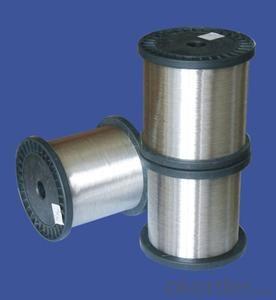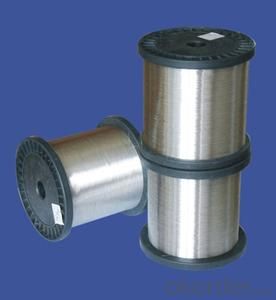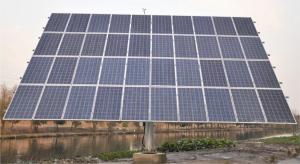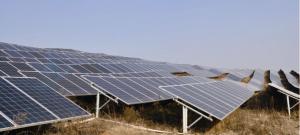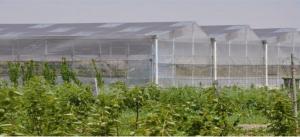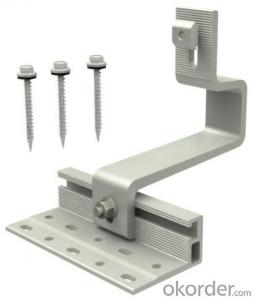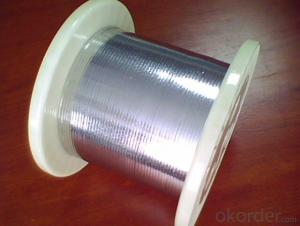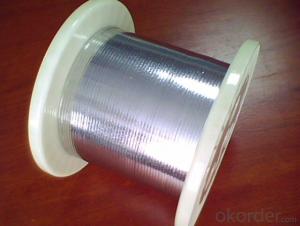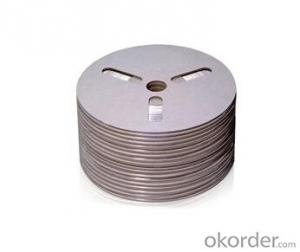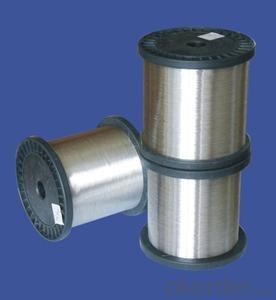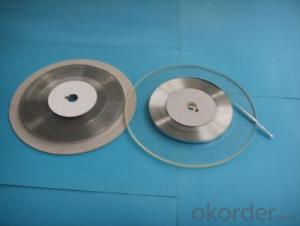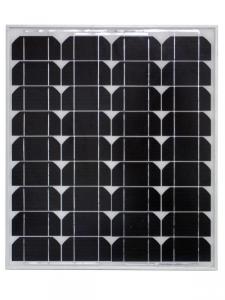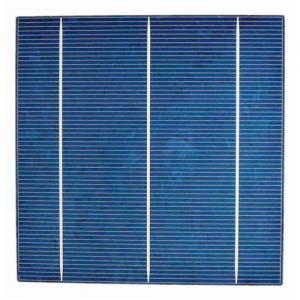Connect-Inter Ribbon-Machine Welding,0.2*1.6
- Loading Port:
- China Main Port
- Payment Terms:
- TT or LC
- Min Order Qty:
- -
- Supply Capability:
- -
OKorder Service Pledge
OKorder Financial Service
You Might Also Like
Structure
We produce custom engineered solar tabbing and bus wire helping to attain the highest efficiencies possible for each unique module design. Our Research and Development team can assist you with your needs evaluation and our world-wide manufacturing facilities are strategically located for large volume production.
Feature
Cold Rolling Mills for manufacturing Photovoltaic (PV) Ribbon:
Cold Rolling Mills for manufacturing Photovoltaic Ribbon
This machine is for making Bare flat copper conductors which is using PV Ribbon Wire , Tinned plated flat copper conductors which is using FFC or materials and it was designed to make the best quality products with high productivity as well as easy to control.
Machine capacity
Tinned plated flat copper conductors which is using FFC
Images
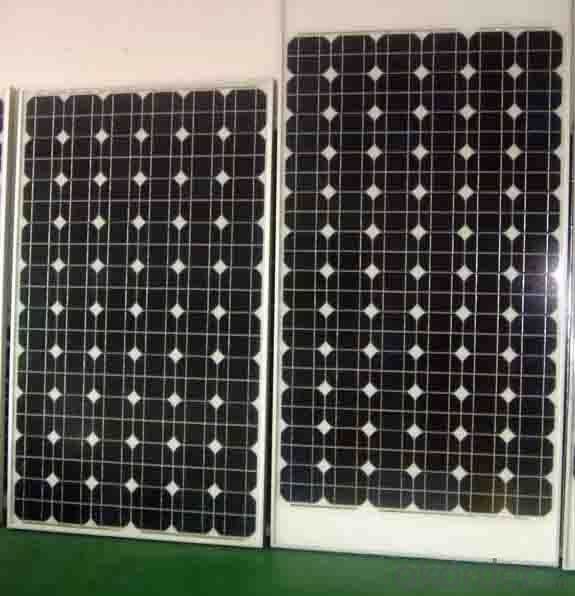
Specifications
Visual Inspection
The visual inspection is using perception to inspect the PV Ribbon Wire. The important
aspect of this inspection is the coated copper must free from:
Whether or not there is any flaw is checked.
Whether or not its surface has uniform lustrous hue be inspected.
Whether or not its surface free from thick.
Coating Thickness Test
The measurement to PV Ribbon Wire is using the external micrometer (0. 001mm)or its equivalents.
The test piece of about 250px long shall be taken and the OD of the wire shall be measured at
3 points.Each point shall be measured 2 times
Thickness Of Solder Coated Wire.After the 3 points of wire be measured,dip the test piece into nitric acid for about 5 minutes,the diameter of core wire shall be measured. One half of the two measurements will give the thickness of solder coated wire.
*Recommended temperature of soldering iron tip : 280~320°C
( According to different thickness, adjust the suitable temperature of soldering )
FAQ
Q:How to guarantee the quality of the products?
A:We have established the international advanced quality management system,every link from raw material to final product we have strict quality test;We resolutely put an end to unqualified products flowing into the market. At the same time, we will provide necessary follow-up service assurance.
Q:Can we visit your factory?
A:Surely, I will arrange the trip basing on your business schedule.
Q:Which payment terms can you accept?
A:T/T,L/C,Moneygram,Paypal are available for us.
- Q: Can solar panels be installed on rooftop gardens or green roofs?
- Yes, solar panels can be installed on rooftop gardens or green roofs. In fact, these locations can provide an ideal setting for solar panel installation as they often receive ample sunlight due to their elevated position and minimal shading. Additionally, the vegetation and greenery on these rooftops can help with temperature regulation and improve the overall efficiency of the solar panels.
- Q: What is the role of solar batteries in storing excess solar energy?
- The role of solar batteries in storing excess solar energy is to capture and store the energy generated by solar panels during periods of high sunlight. These batteries allow for the energy to be stored and used at a later time, such as during the night or on cloudy days, ensuring a continuous supply of electricity from solar power even when the sun is not shining.
- Q: How does the installation of solar panels affect the roof's warranty?
- The installation of solar panels typically does not void the roof's warranty. However, it is important to consult with the roofing manufacturer and installer to ensure that the installation process does not breach any warranty conditions.
- Q: How do solar collectors perform in areas with limited sunlight?
- Solar collectors perform less efficiently in areas with limited sunlight. The amount of sunlight directly affects the amount of energy that can be captured by solar collectors. In areas with limited sunlight, the solar collectors may not be able to generate as much electricity or heat as they would in areas with abundant sunlight. However, advancements in solar technology have made it possible for solar collectors to still be viable in areas with limited sunlight, although their performance may be reduced compared to areas with more sunlight.
- Q: Can solar collectors be used in combination with heat pumps?
- Yes, solar collectors can be used in combination with heat pumps. This combination is often referred to as a solar thermal heat pump system. In this setup, solar collectors are used to capture thermal energy from the sun and transfer it to a heat pump. The heat pump then amplifies the captured heat and transfers it to a space heating or water heating system. By combining solar collectors with heat pumps, the system becomes more efficient and sustainable. The solar collectors provide an initial source of renewable energy, reducing the reliance on fossil fuels. The heat pump amplifies and enhances this energy, maximizing the overall efficiency of the system. This combination is particularly beneficial in areas with varying weather conditions. During sunny days, the solar collectors can provide a significant amount of thermal energy, reducing the load on the heat pump. On cloudy or less sunny days, the heat pump can compensate for the lower solar input by using its own energy efficiency to maintain the desired temperature. Furthermore, the integration of solar collectors with heat pumps can also provide benefits in terms of cost savings. The solar energy captured by the collectors can offset the electricity consumption of the heat pump, leading to reduced energy bills. In summary, using solar collectors in combination with heat pumps is a viable and effective solution for harnessing renewable energy and providing efficient heating and hot water systems. This combination offers both environmental and economic benefits, making it an attractive option for homeowners and businesses alike.
- Q: Can solar energy systems be installed in urban areas?
- Yes, solar energy systems can be installed in urban areas. In fact, urban areas have a great potential for solar energy due to the availability of rooftops, parking lots, and other open spaces. Solar panels can be integrated into buildings and infrastructure, providing clean and renewable energy to power homes, businesses, and even entire neighborhoods. Additionally, advancements in technology have made solar panels more efficient and aesthetically pleasing, making them suitable for urban environments.
- Q: What is the lifespan of a solar mounting system?
- The lifespan of a solar mounting system can vary depending on various factors such as the quality of the materials used, the design and installation, and the environmental conditions it is exposed to. However, a well-designed and properly installed solar mounting system can typically last for 20 to 25 years or even longer with regular maintenance and occasional repairs.
- Q: What is the role of charge controllers in solar energy systems?
- Charge controllers play a crucial role in solar energy systems by regulating the flow of electricity between the solar panels and the batteries. They ensure that the batteries are charged safely and efficiently, preventing overcharging or deep discharging, which can damage the batteries. Additionally, charge controllers help optimize the performance of the solar energy system by maximizing the charging process and extending the lifespan of the batteries.
- Q: What is the maximum current rating for a solar controller?
- The maximum current rating for a solar controller typically depends on the specific model and manufacturer. However, common solar controllers have maximum current ratings ranging from 10 to 100 amps.
- Q: Can solar chargers be used for drones?
- Yes, solar chargers can be used for drones. They can harness solar energy to charge the drone's batteries, providing a sustainable and environmentally-friendly power source. However, the efficiency and charging time may vary depending on the size and power requirements of the drone, as well as the solar charger's capacity.
Send your message to us
Connect-Inter Ribbon-Machine Welding,0.2*1.6
- Loading Port:
- China Main Port
- Payment Terms:
- TT or LC
- Min Order Qty:
- -
- Supply Capability:
- -
OKorder Service Pledge
OKorder Financial Service
Similar products
Hot products
Hot Searches
Related keywords
